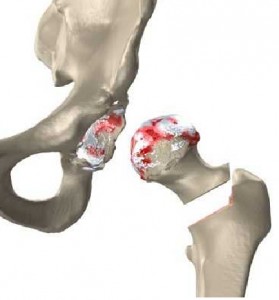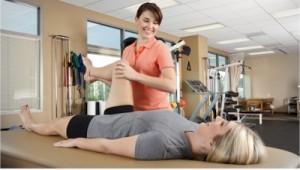There might be a time when a doctor may indicate that you or someone you know may need a hip replacement due to a variety of reasons. It is important to understand all the facts and understand that there are myths out there that should no discourage you or your loved one from going through with the surgery if that is what the doctor recommends.

Don’t get confused or overwhelmed with MYTHS you hear about
MYTH: You should wait until you are unable to walk anymore.
FACTS: While this would appear to make sense, an indication of surgery is when pain begins to impact your daily routine and interfere with your life.
MYTH: You are too old/young for a hip replacement.
FACT: There is no age requirement for a hip replacement.
MYTH: You will have debilitating limitations after surgery.
FACT: If the surgery is performed correctly and you follow your rehabilitation program, including occupational therapy and physical therapy, then you may even achieve a high level of functioning than before the surgery (Cleveland, 2016). Early mobilization is key. Start moving using an assistive device, such as a walker, crutches, or cane. You will work with a physical therapist and occupational therapist immediately after surgery to resume to independent and safe living (American Academy of Orthopaedic Surgeons, 2017).
MYTH: You will be in unbearable pain after surgery.
FACT: While you will experience pain after surgery, it should be bearable while following doctor’s precautions and medications that address post-surgical pain (Cleveland, 2016).
DID YOU KNOW?
- Hip replacements are one of the most commonly performed orthopedic reconstructive surgery that is performed
- The lifespan of the hip replacement implants can outlive the patient themselves (Ashman, Cruikshank & Moran 2016).
- Total hip replacement surgery is one of the cost effective and cost-effective medical intervention
- This surgery can dramatically relieve pain for patient’s experiencing deterioration of their joints due to a variety of diagnosis’ such as inflammatory disorders and osteoarthritis
- Surgery has shown to have tremendous improvement in the quality of life
- Within three months, there is evidence to show that there are improvements in pain, sleep, energy, social and sexual functions (Crawford & Murray, 1997).
The following video is a great summary of what to expect the first 6 weeks after hip replacement surgery. The information contained within this video is consistent with credible literature regarding recovery after a hip replacement. Here are some highlights:
-Role of physical therapist & occupational therapist
-What happens after discharge
-Follow up with healthcare provers
-Having support available
-Do’s and Do Don’ts after surgery
CONTACT YOUR PHYSICIAN IMMEDIATELY IF YOU EXPERIENCE ANY OF THE FOLLOWING WARNING SIGNS:
*Increased pain, tenderness, redness, swelling of leg, drainage from surgical site, fever, shortness of breath or chest pain (WebMD, 2017)
The following video will give you great insight onto the recovery process after a hip replacement. The information contained within this video is consistent with credible literature regarding recovery after a hip replacement.
Some highlights of this video are:
-Importance of exercise after surgery as recommended by a rehab therapist
-Importance of following total hip precautions after surgery as recommended by surgeon
-Use of adapted equipment for increased independence and safety
-Incision Care
Toileting is an essential part of independent living. Unfortunately, this task can be difficult and even potentially dangerous task for some populations, such as those who have undergone total hip replacements. Sitting down and standing up from the toilet can increase the risk for falls, particularly for those who have a compromised balance after surgery. Toilet grab bars are a piece of adaptive equipment that can aid in safe and independent transfers (Kennedy, Arcelus, Guitard, Goubran & Sveistrup).
The following video is a value resources for Patient Education and discusses bathroom adaptations that will aid in increased independence and safety. The information contained within this video is consistent with credible literature regarding recovery after a hip replacement.
References:
American Academy of Orthopaedic Surgeons. (2017). Activities After Hip Replacement. Retrieved from http://orthoinfo.aaos.org/topic.cfm?topic=a00356
Ashman, B., Cruikshank, D., & Moran, M. (2016). Total hip replacement: Relieving pain and restoring function. British Columbia Medical Journal, 58(9), 505-513.
Cleveland Clinic. (2016). 5 Myths About Joint Replacement That May Be Keeping You in Pain. Retrieved from https://health.clevelandclinic.org/2015/11/5-joint-replacement-myths-may-keeping-pain/
Crawford, R.W. & Murray, D.W. (1997). Total hip replacement: indications for surgery and risk factors for failure. Annals Rheumatic Diseases, 56(8), 455-457. http://doi:10.1136/ard.56.8.455
Kennedy, M. J., Arcelus, A., Guitard, P., Goubran, R. A., & Sveistrup, H. (2015). Toilet Grab-Bar Preference and Center of Pressure Deviation During Toilet Transfers in Healthy
Seniors, Seniors With Hip Replacements, and Seniors Having Suffered a Stroke. Assistive Technology, 27(2), 78-87. doi:10.1080/10400435.2014.976799
WebMD. (2017). Timeline: Hip Replacement Surgery. Retrieved from http://www.webmd.com/osteoarthritis/timeline-hip-replacement#1

